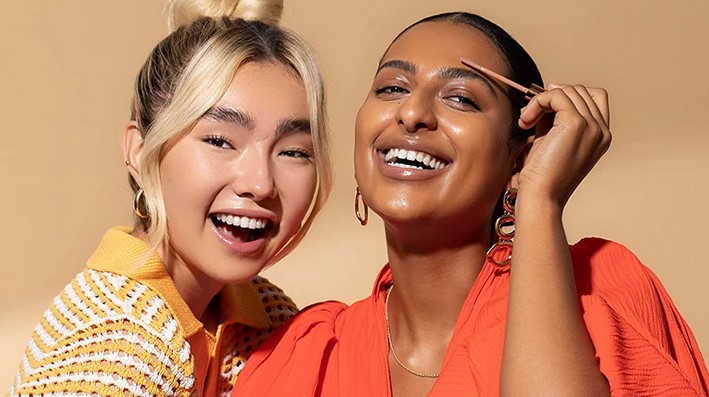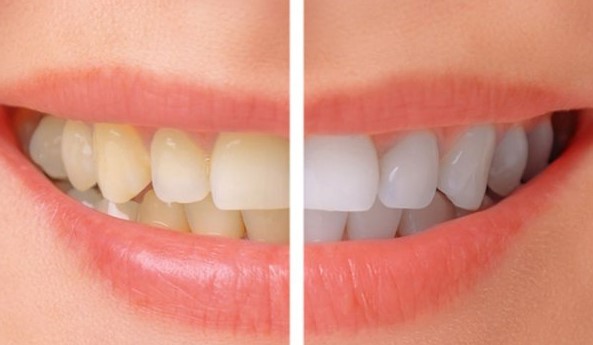
Introduction
In a world obsessed with perfect smiles and gleaming white teeth, it’s time to break away from unrealistic beauty standards and embrace the natural beauty that resides within each of us. Yellowish teeth, often considered a cosmetic imperfection, can actually be a unique and endearing aspect of an individual’s appearance. Instead of succumbing to societal pressure, we should celebrate our yellowish teeth as a part of our normal beauty. This article explores the reasons behind yellowish teeth, the cultural influences on beauty perceptions, and provides practical tips for embracing and loving your yellowish teeth.
Understanding Yellowish Teeth
Yellowish teeth are a common occurrence and can be attributed to a variety of factors. One primary factor is genetics. Just as the color of our hair and eyes is determined by our genes, so too is the natural color of our teeth. Additionally, certain dietary habits and lifestyle choices, such as consuming coffee, tea, red wine, and tobacco, can contribute to teeth discoloration. As we age, the enamel on our teeth naturally thins, revealing the yellowish dentin beneath. While these factors may lead to teeth discoloration, they also remind us that our bodies are a product of our unique genetics and experiences.
Cultural Influences on Beauty Perceptions
The perception of beauty is heavily influenced by cultural norms and media portrayals. In recent years, the media has often depicted flawless, blindingly white teeth as the epitome of attractiveness. This has led many to perceive yellowish teeth as undesirable and unattractive. However, it’s essential to recognize that these perceptions are shaped by an industry that profits from promoting specific beauty ideals. Our acceptance of yellowish teeth challenges these unrealistic standards and encourages us to appreciate authenticity over artificiality.
The Power of Authenticity
Embracing yellowish teeth is not merely about physical appearance; it’s about embracing authenticity. Our individuality is what makes us truly beautiful. When we display authenticity, we send a message of self-acceptance and self-love. Learning to love our yellowish teeth is a journey towards embracing all aspects of ourselves, both the perceived flaws and the undeniable strengths.
Tips for Embracing and Loving Your Yellowish Teeth
1. Shift Your Perspective: Instead of viewing your yellowish teeth as a flaw, try to see them as a reflection of your uniqueness. Celebrate the diversity that exists within every individual, including the subtle differences in tooth color.
2. Practice Self-Compassion: Treat yourself with kindness and compassion. Remember that nobody is perfect, and everyone has physical attributes they may not be entirely satisfied with. Self-love goes beyond appearances.
3. Limit Comparisons: Avoid comparing your teeth to those of celebrities or models. Recognize that even those seemingly perfect smiles often undergo digital manipulation and professional whitening treatments.
4. Focus on Overall Oral Health: While the color of your teeth is one aspect of oral health, the health of your teeth and gums is more important. Regular dental care, including brushing, flossing, and professional cleanings, contributes to your overall well-being.
5. Find Inspiration: Seek out role models and public figures who openly embrace their authentic selves. Their stories can serve as a source of inspiration and motivation on your journey to self-acceptance.
6. Experiment with Makeup and Fashion: Use makeup and fashion to accentuate your unique features. Bold lipstick shades or clothing colors that complement your complexion can draw attention away from your teeth if you’re feeling self-conscious.
7. Practice Positive Affirmations: Affirmations are powerful tools that can help reshape your self-perception. Repeat positive affirmations that celebrate your uniqueness and remind yourself of your intrinsic worth.
8. Smile with Confidence: A genuine smile exudes confidence and charm, regardless of the color of your teeth. Let your warmth and authenticity shine through, making your yellowish teeth a secondary consideration.
Conclusion
Loving and embracing our yellowish teeth is not a small feat in a world dominated by unrealistic beauty standards. However, it’s a journey well worth undertaking. By doing so, we’re not only redefining our own perceptions of beauty but also contributing to a broader cultural shift towards inclusivity and authenticity. Remember that beauty is not confined to a narrow set of ideals but is a reflection of our uniqueness and individuality. As you embark on this journey of self-love and acceptance, you’re paving the way for a more diverse and beautiful world—one where every smile tells a story of authenticity and the courage to be unapologetically yourself.
